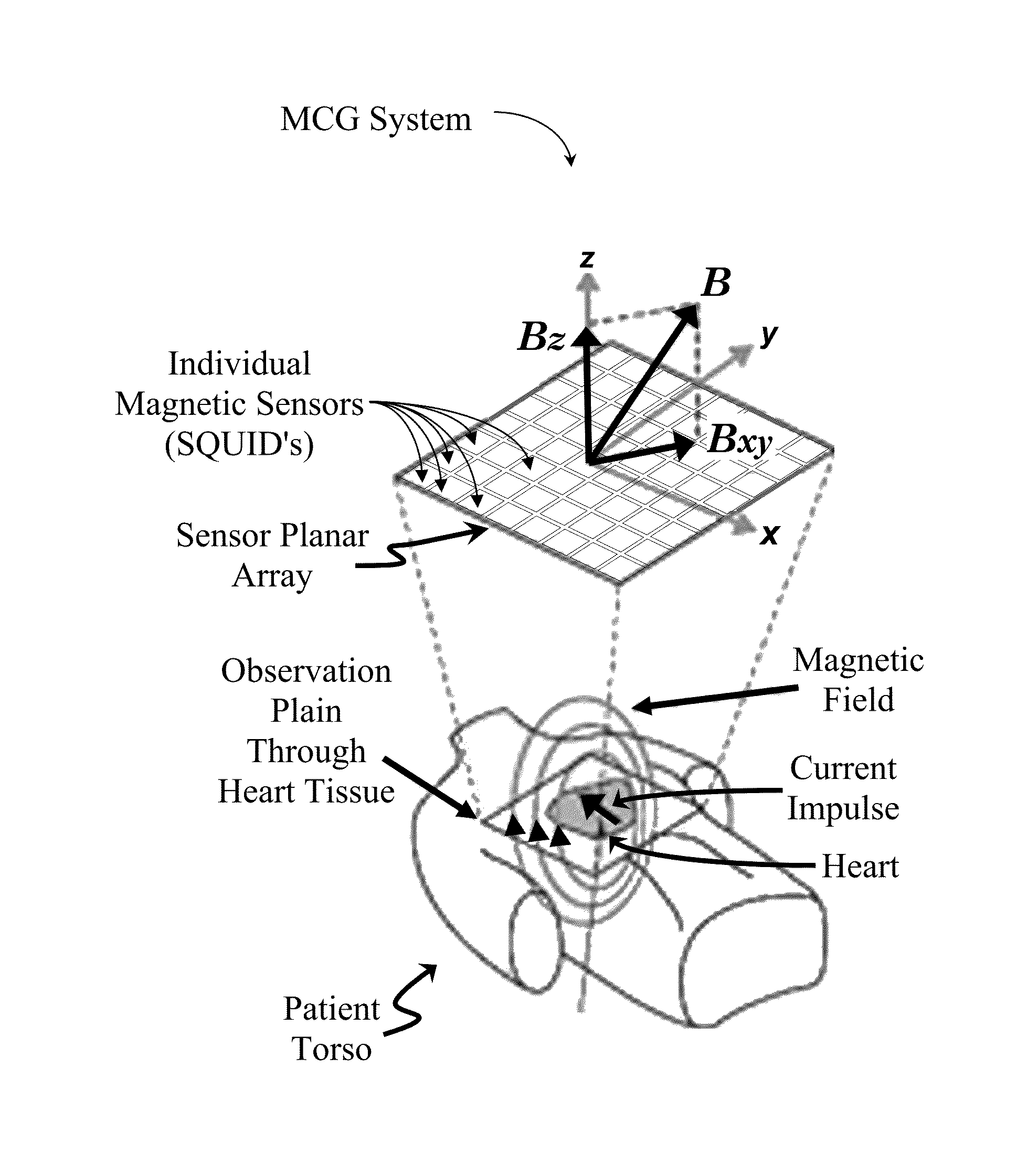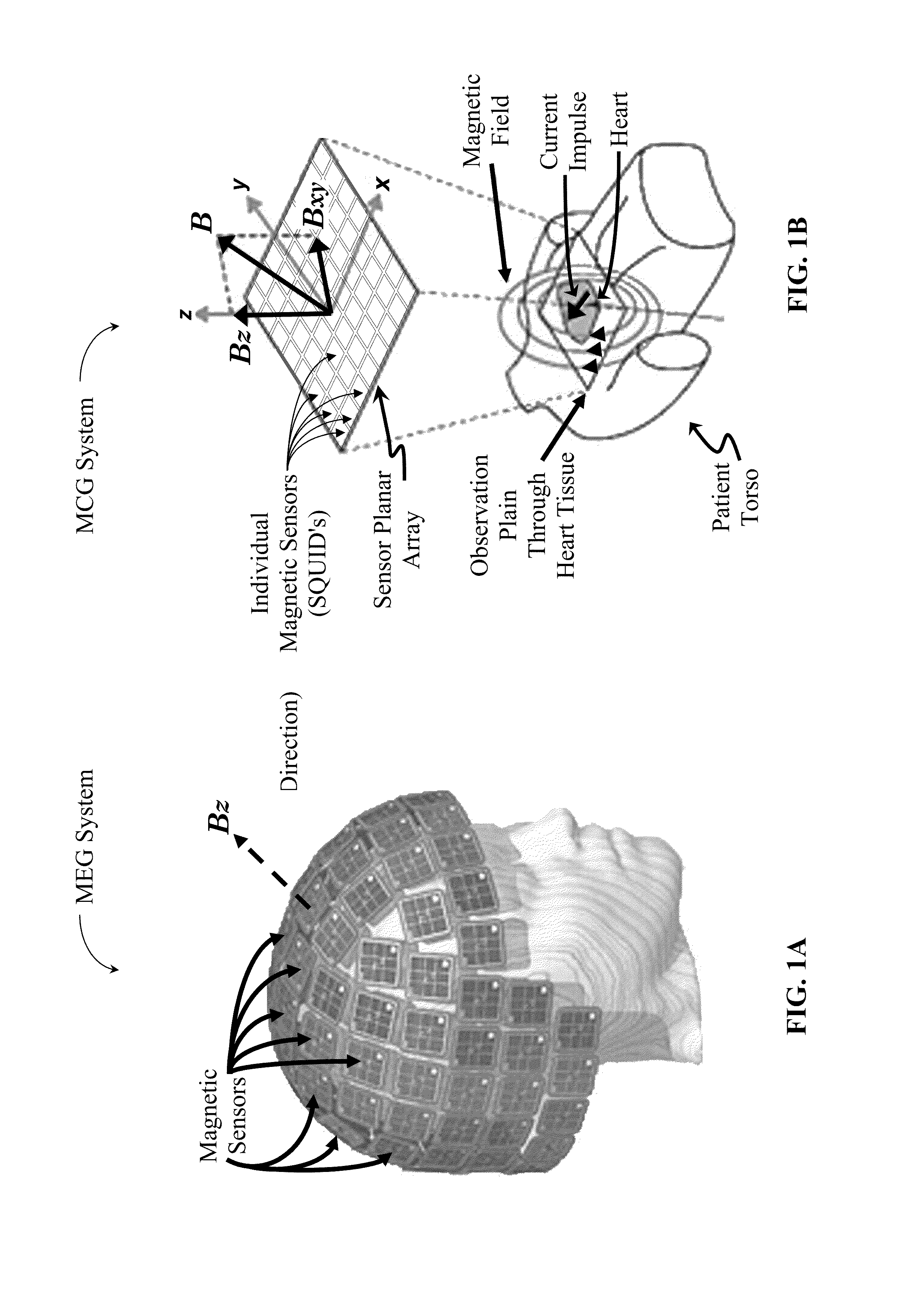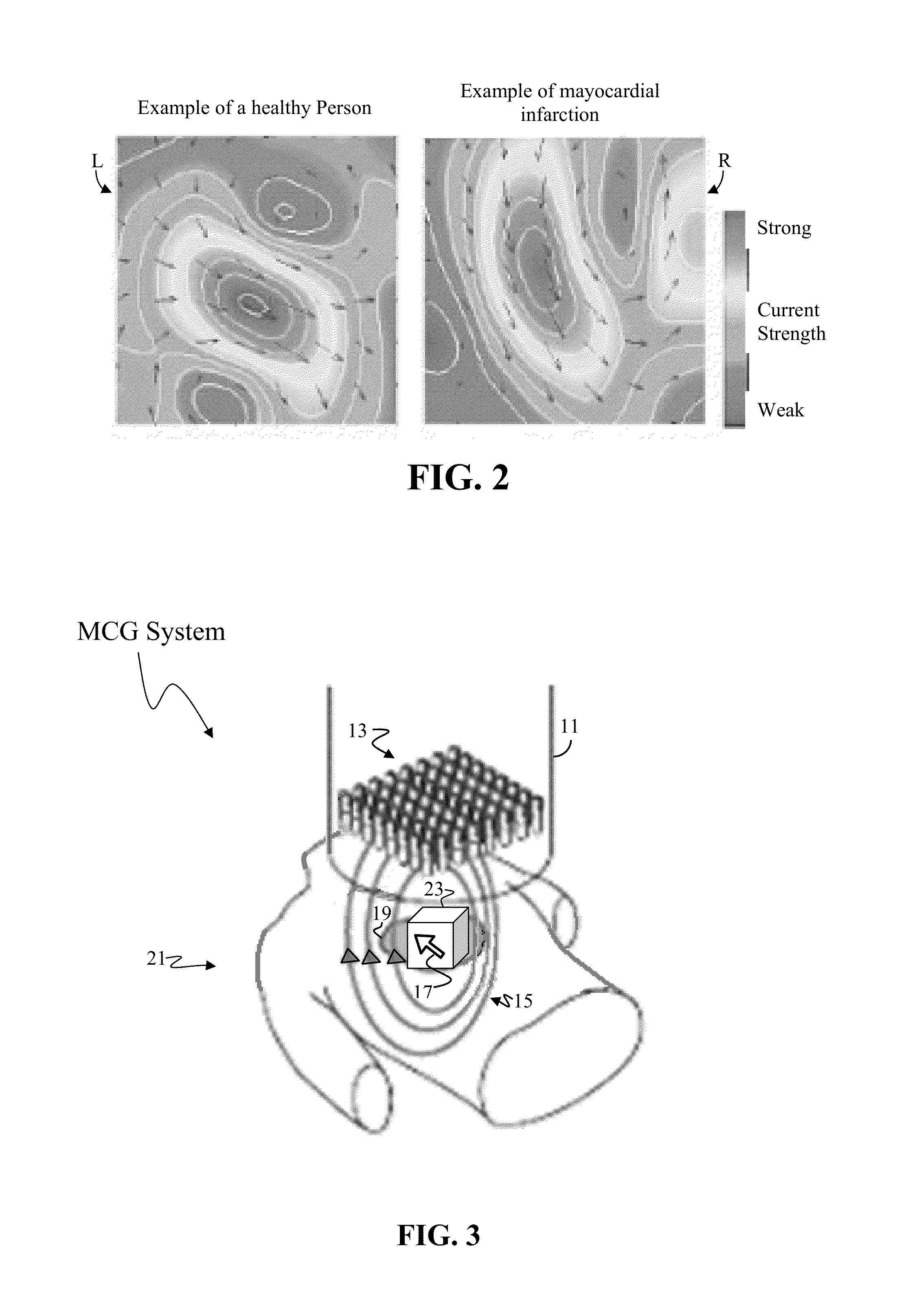2D dipole localization using absolute value of MCG measurements
a dipole localization and absolute value technology, applied in the field of magnetic imaging, can solve the problems of difficult and expensive simulation of mcg medical equipment in a laboratory, and cannot determine whether the detected magnetic flux is positive or negative, and achieve the effect of facilitating discussion of some aspects
- Summary
- Abstract
- Description
- Claims
- Application Information
AI Technical Summary
Benefits of technology
Problems solved by technology
Method used
Image
Examples
Embodiment Construction
[0081]An MCG system require highly sensitive magnetic sensors to produce images of magnetic fields emanating from living tissue, such as human heart tissue. Due to the high sensitivity requirements of an MCG system, its magnetic sensors are typically comprised of superconducting quantum interference devices (SQUIDs).
[0082]With reference to FIG. 3, a typical MCG system consists of an MCG sensor unit 11 housing a small number of individual SQUID sensors 13 (typically arranged as a planar array of sixty-four or fewer sensors). Electric impulses 17 within the body create a magnetic field 15. In the present case, the human heart 19 functions as the observed source of electric impulses 17 (i.e. as the current source).
[0083]Each SQUID sensor 13 is a capture point, and hereinafter may be referred to as a capture 13. Each capture 13 measures a one-dimensional (i.e. 1D) magnetic waveform in a direction perpendicular to the sensor planar array (i.e. the z-direction) emanating from the patient'...
PUM
 Login to View More
Login to View More Abstract
Description
Claims
Application Information
 Login to View More
Login to View More - R&D
- Intellectual Property
- Life Sciences
- Materials
- Tech Scout
- Unparalleled Data Quality
- Higher Quality Content
- 60% Fewer Hallucinations
Browse by: Latest US Patents, China's latest patents, Technical Efficacy Thesaurus, Application Domain, Technology Topic, Popular Technical Reports.
© 2025 PatSnap. All rights reserved.Legal|Privacy policy|Modern Slavery Act Transparency Statement|Sitemap|About US| Contact US: help@patsnap.com



